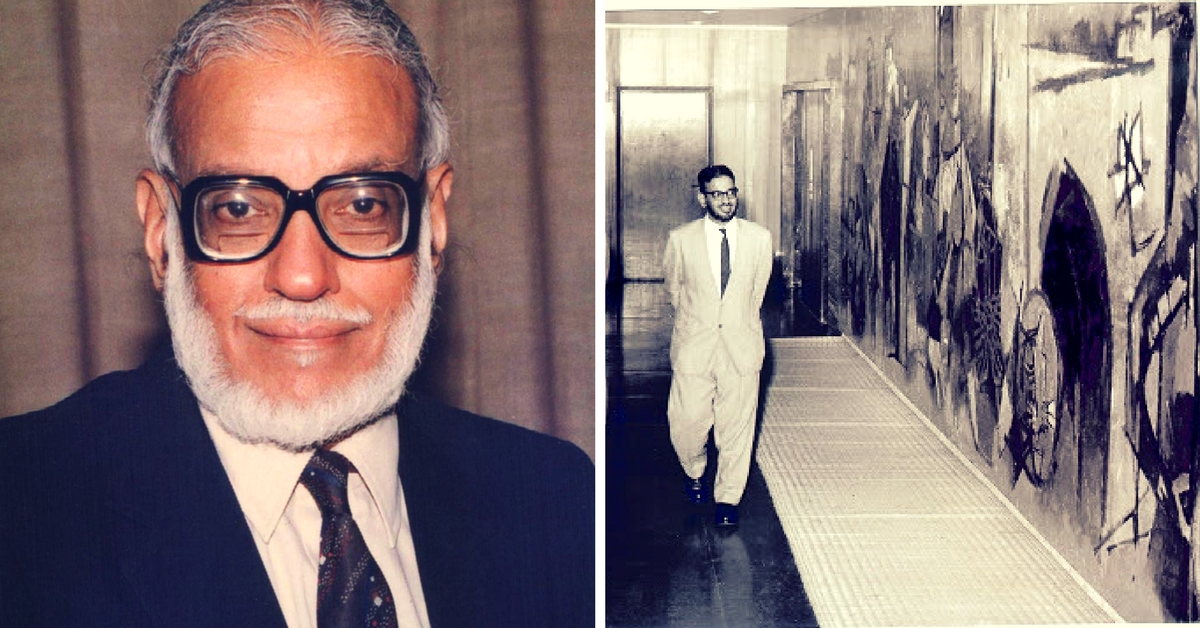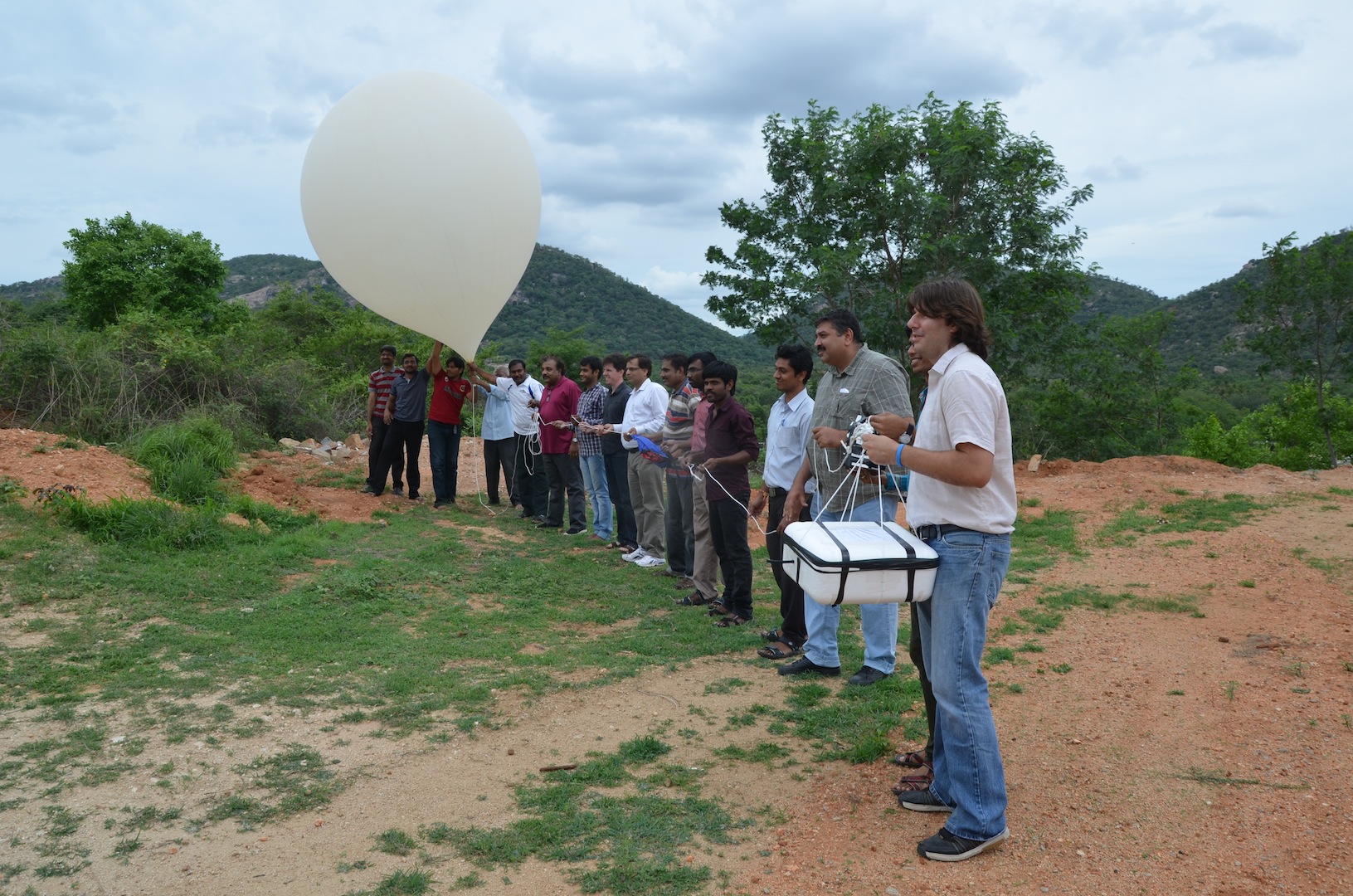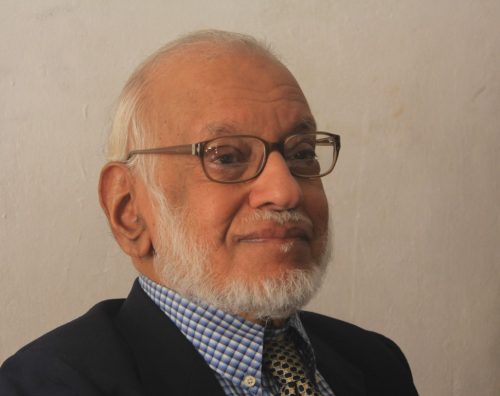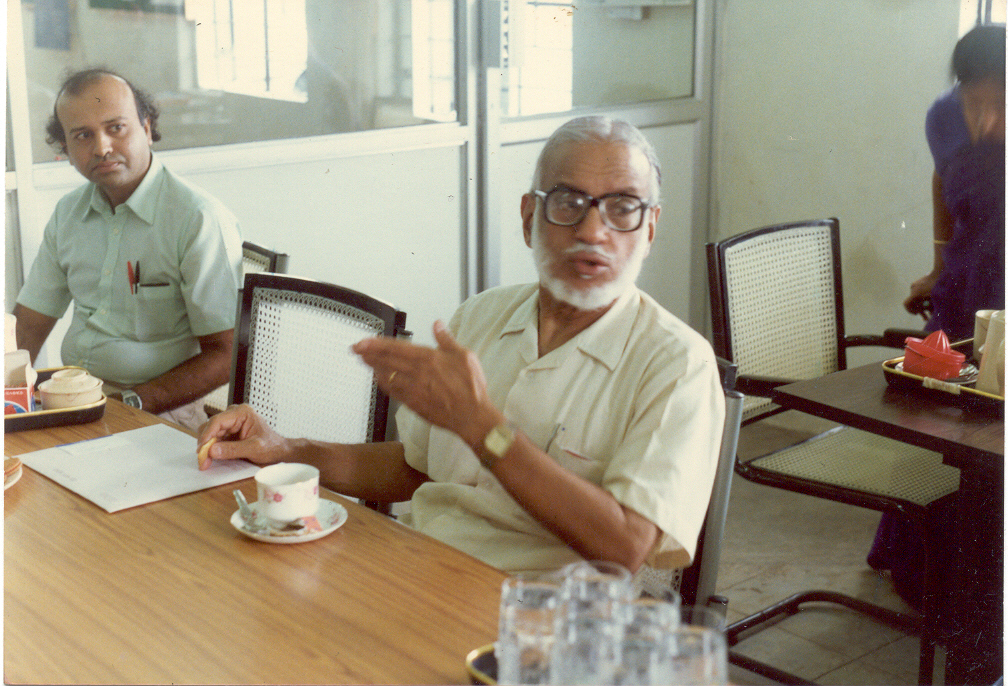A Tribute to M G K Menon, the Brilliant Physicist who Laid India’s Scientific Foundations
Often been described as one of India’s most eminent 'statesmen of science', ex-ISRO Chairman M G K Menon worked tirelessly for decades to develop a strong scientific programme in India. Here's his inspiring story.

Scientist, policy-maker, scholar, parliamentarian, Cabinet Minister and a humanist of rare elegance, Mambillikalathil Govind Kumar Menon has often been described as one of India’s most eminent ‘statesmen of science’. Affectionately known as Goku to friends, Menon played a prominent role in the development of science and technology in India over the last five decades. Sadly, the acclaimed scientist passed away on November 22, 2016, at the age of 88.
This is the story of M G K Menon, a brilliant physicist who worked tirelessly for decades to develop and lay the foundation for a strong scientific programme in India.

Photo Source
Born in Mangalore in 1928, Menon did his matriculation from Punjab University, followed by BSc from Jaswant College at Jodhpur and MSc from the Royal Institute of Science at Bombay. Then, inspired by the legendary C V Raman, he decided to devote his energy to research in physics, especial particle science.
It was with this in mind that Menon joined the University of Bristol to do his PhD under the mentorship of noted physicist Cecil Powell (who later won a Nobel Prize for Physics). Here, Menon developed methods to use large photographic emulsion stacks for the measurement of cosmic rays at high atmospheric altitudes, and the processes of decay of high energy particles like K-mesons found in cosmic rays.
Awarded a PhD at the relatively young age of 25, Menon returned to India in 1955 to work at the Tata Institute of Fundamental Research (TIFR) at the invitation of its founder, Homi Jehangir Bhabha. This marked the commencement of Menon’s remarkable scientific trajectory in India.

Photo Source
At TIFR, Menon was a part of the team that developed the capability for high altitude studies of cosmic rays using atmospheric balloons. At that time, the funding for science in the country was low. So, Menon and his team began their experiment with rubber-braced balloons before developing the technique of flying large-volume plastic balloons to very high altitudes.
Today, balloon-based study at TIFR has grown multi-fold, with a full-fledged production facility capable of manufacturing plastic balloons that can carry one-tonne payloads to an altitude of 40 kilometres.

Photo Source
Menon also conducted pioneering experiments on particle physics and cosmic rays using detectors deep underground. The most famous of these was the Kolar Gold Fields (KGF) experiments, which demonstrated the feasibility of doing neutrino-induced interactions and related new phenomena. Held in the 1960s, this was the first experiment in the world to detect atmospheric neutrinos (formed at the top of the atmosphere due to cosmic ray interactions).
In the 1980s, Menon led the proton decay experiment at KGF, the first major dedicated experiment in the world to look for decays of the apparently stable proton. He continued to play a major role in the nearly three-decade-long story of experiments at KGF. Interestingly, it’s a little known fact that the neutrino experiments at KGF also threw up a handful of rare events (called Kolar events), which are suggestive of new long-lived particles and remain unexplained to date!
For his landmark contributions to particle physics, Menon was elected Fellow of the Royal Society of London in 1970.

Photo Source
Menon had been made the TIFR Director in 1966 after Homi Bhabha’s untimely death in a tragic air crash. The same year, he was also given additional charge as Chairman of ISRO and of the Physical Research Laboratory in Ahmedabad. In 1971, he was appointed as the Secretary in the Department of Electronics and for the next two decades, he played a key role in India’s science and technology policy-making.
M G K Menon also had the innate ability to spot the right talent, encourage it and entrust it with responsibility. For example, he was the one who enabled the appointment of Professor Satish Dhawan (then working at IISc) to the Chairmanship of ISRO. He also encouraged many other talented Indian scientists while heading TIFR.
You May Like: Transported on a Bicycle, Launched from a Church: The Amazing Story of India’s First Rocket Launch
In 1974, he was appointed Scientific Adviser to the Defence Minister and entrusted with the responsibility of Defence Research and Development Organization (DRDO). In 1978 he was appointed Secretary, Department of Science and Technology, and Director-General of the Council of Scientific and Industrial Research (CSIR).

Photo Source
During his multiple administrative positions, including one as Member of the Planning Commission between 1982 and 1989, Menon advised the government on research policy, including electronics initiatives, fundamental and industrially-relevant science. However, the stint he is most remembered for is as the Secretary of the Department of Environment. During the aforementioned tenure, he played an important role in saving Kerala’s Silent Valley from ecological disaster. This is what happened:
A Kerala Assembly resolution was passed in the mid-1970s to dam the Kunthipuzha river to help irrigate 10,000 hectares of land in Palghat and generate 250 MW electricity. However, the project was widely viewed as a threat to the Silent Valley – a 30,000-hectare area of dense tropical forests with a diversity of animals and plants.
Menon was appointed the chairman of an eight-member panel to resolve the impasse between environmentalists seeking to protect the Valley and the Kerala government that was enthusiastic about the project. He organised careful and extended hearings of the arguments of both sides. Such was his objectivity that both sides felt that his decision would go in their favour.
The panel’s decision, accompanied by a carefully drafted evaluation, went in favour of the environmentalists – it said that the dam would cause irreparable damage to the ecology and advised the Kerala government to abandon the project, suggesting an alternative site in Idukki district. In September 1984, the project was formally scrapped.
M G K Menon also played a significant role in supporting the development of scientific facilities in the country. He believed that building a world-class infrastructure in experimental science was the best way to attract and nurture the best and brightest young scientific minds in India. For instance, on Menon’s initiative, the Kodaikanal Observatory (then under the India Meteorological Department) was made an autonomous institution under the Department of Science and Technology (DST) in 1971. This paved the way for its rapid growth – in 1985, the observatory built its own indigenous medium-size aperture optical telescope!

Photo Source
A staunch supporter of indigenisation of technology, Menon also laid great stress on national self-reliance and an uncompromising focus on excellence. It was thanks to his leadership and initiative that the Ooty Radio Telescope (ORT) and the Giant Metrewave Radio Telescope (GMRT) were set up in India. In 1995, when the GMRT was set up, it was the world’s largest telescope in its frequency range, which was and still is used by astronomers from all over the world.
Also Read: Meet India’s First Woman PhD in Botany – She Is The Reason Your Sugar Tastes Sweeter!
For his exemplary contribution to scientific development in India, M G K Menon was awarded the Padma Vibhushan in 1985. Between 1989 and 1990, he was a Union Minister of State, first for Science and Technology and then for Education. In 1990, he was elected to the Rajya Sabha, of which he remained a member until 1996. All along, he maintained his strong links with TIFR by continuing to be a member of its council until 2004. In 2008, the asteroid 7564 Gokumenon was named in honour of this distinguished scientist!
As former TIFR astrophysicist Ramanath Cowsik wrote in the journal Current Science in 2013,
“If we can call Homi Bhabha the architect of modern scientific and technological India, then Menon can be considered the builder who grasped the significance of the plans and assiduously worked on them and oversaw the construction of the first important stages.”
Many eminent personalities have contributed to the growth of experimental facilities in the country since Independence. However, M G K Menon was the master conductor who conducted this scientific symphony. With his passing away, India has lost an extraordinary man who revolutionised the growth of science in India.
Like this story? Have something to share? Email: contact@thebetterindia.
NEW! Log into www.gettbi.com to get positive news on Whatsapp.
If you found our stories insightful, informative, or even just enjoyable, we invite you to consider making a voluntary payment to support the work we do at The Better India. Your contribution helps us continue producing quality content that educates, inspires, and drives positive change.
Choose one of the payment options below for your contribution-
By paying for the stories you value, you directly contribute to sustaining our efforts focused on making a difference in the world. Together, let’s ensure that impactful stories continue to be told and shared, enriching lives and communities alike.
Thank you for your support. Here are some frequently asked questions you might find helpful to know why you are contributing?


This story made me
-
97
-
121
-
89
-
167











